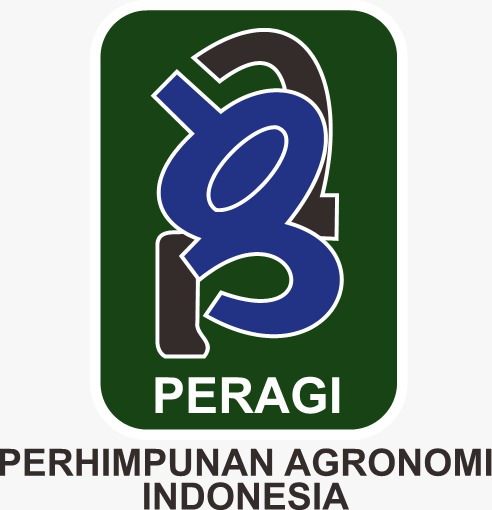Morphological Characteristics and Content of Secondary Metabolite Compounds of Medicinal Plants for Postpartum Infection Therapy
Abstract
This study investigated the potential of medicinal plants in Central Kalimantan, Indonesia, specifically focusing on Ageratum conyzoides, Mussaenda frondosa, Curcuma longa, and Uncaria gambir, which are utilized by the Dayak tribe for treating postpartum infections. Morphological observations were conducted in two distinct locations, namely Kota Besi District and Mentaya Hulu District of East Kotawaringin. The findings of this study offer a comprehensive understanding of the morphological characteristics and secondary metabolite compounds of medicinal plants in Central Kalimantan. The research employed an exploratory survey method involving direct observations of plant morphology at the research site, with the selection of the observed area utilizing a purposive sampling technique. The study aimed to qualitatively describe the morphological characteristics and analyze the compound content of Ageratum conyzoides, Mussaenda frondosa, Curcuma longa, and Uncaria gambir. Despite morphological variations between locations, the similarities in morphological characteristics and secondary metabolite compound content suggest comparable potential uses. The analysis of secondary metabolite compounds contributes to the traditional knowledge regarding the bioactive properties of these plants. The bioactive compounds identified in these plants include flavonoids, alkaloids, tannins/phenols, steroids, triterpenoids, and saponins. The study concludes that the information obtained can enhance public awareness of the health benefits associated with traditional medicinal plants, particularly in the treatment of postpartum infections. The similarities in morphological characteristics and secondary metabolite compound content between locations indicate similar potential uses, with considerations for ecological and sustainability aspects in their utilization, which serves as the final outcome of this research.
Downloads
References
Amin, A. (2023). Methanol Extracts Formulation Of Tambora Leaves ( Ageratum conyzoides L .), Sembalit Angin Leaves By Astuti Amin.
Andriani, D., & Okalia, D. (2022). Exploration And Characterization Of Fungi From Oil Palm Rhizosphere ( Elaeis Guneensis Jacq ) On People' S Plantations In Kuantan Singingi Regency. 4(1).
Ardiansyah, A., Hujjatusnaini, N., Amin, A. M., & Indahsari, L. I. N. (2021). Antibacterial Effectiveness Of Methanol Extract Combination Formula 3:2:1 Of Tambora Leaf (Ageratum Conyzoides), Sembalit Angin Leaf (Mussaenda Frondosa L), Turmeric Rhizome (Curcuma Longa L) On The Growth Of Staphylococcos Aureus. Sainstek : Jurnal Sains Dan Teknologi, 13(1), 1. Https://Doi.Org/10.31958/Js.V13i1.3513
Ayu Astria, Raden, S., & Sahidan. (2022). Identifikasi Jamur Candida Albicans Pada Mamae Ibu Menyusui Di Puskesmas Nusa Indah Kota Bengkulu. Jurnal Fatmawatilaboratory & Medical Science, 2(2), 92–99. Http://Ojs.Poltekkesbengkulu.Ac.Id/Index.Php/Flms/Article/View/348/188
Dwipa, I., & Martinsyah, R. H. (2022). Exploration And Characterization Of Hanjeli Nutfah Plasma ( Coix Lacrima-Jobi L .) In West Sumatra Province. 4(1).
Hasanuddin, H., Muhibbuddin, M., Wardiah, W., & Mulyadi, M. (2018). Anatomi Tumbuhan. In Anatomi Tumbuhan. Https://Doi.Org/10.52574/Syiahkualauniversitypress.291
Mayoru, S., Ayu Jufri, W., & Usman, N. (2022). Karakteristik Morfologi Tumbuhan Daun Majemuk. Jurnal Jbes: Journal Of Biology Education And Science, 2(2), 107–114. Https://Jurnal.Stkipkieraha.Ac.Id/Index.Php/Jbes
Noviani, W., Khasanah, S. N. K., Dani, R., Ardiyanti, M., Savitri, A. D., & Priyatmoko, A. (2018). Keanekaragaman Vegetasi Rumput Dan Pohon Di Kawasan Hutan Wisata Tinjomoyo. In Seminar Nasional Biologi - Universitas Negeri Semarang “Eksplorasi Keanekaragaman Hayati Sebagai Upaya Konservasi Di Era Disrupsi.”
Nugroho, A. W. (2017). Review: Konservasi Keanekaragaman Hayati Melalui Tanaman Obat Dalam Hutan Di Indonesia Dengan Teknologi Farmasi: Potensi Dan Tantangan. Jurnal Sains Dan Kesehatan, 1(7), 377–383. Https://Doi.Org/10.25026/Jsk.V1i7.71
Puspitasari, E., Hujjatusnaini, N., & Amin, A. M. (2022). Analysis Of Botanical Composition And Potential Of Kelakai Leaves ( Stenochlaena Palustris ) Of Peat Swamp Plants In Central Kalimantan As Medicinal Plants. 4(2), 222–229.
Rastono, A. (2023). Growth And Yield Of Intercropping Between Carica ( Carica Pubescens ) And Sweet Potato ( Ipomoea Batatas L .) And Leeks ( Allium Fistulosum L .). 5(2).
Sani, W., Iswadi, & Samingan. (2017). Prosiding Seminar Nasional Biologi 2016. In Prosiding Seminar Nasional Biologi (Vol. 2, Issue Ip2b Ii).
Sari, I., Henri, H., Sari, E., & Suharyanto, S. (2021). Karakterisasi Morfologi Dan Skrining Fitokimia Ekstrak Umbi Dan Daun Tumbuhan Ginseng (Phytolacca Octandra L.). Al-Hayat: Journal Of Biology And Applied Biology, 4(1), 55–64. Https://Doi.Org/10.21580/Ah.V4i1.7167
Sudarmono, S., & Sahromi, S. (2017). Pollen Atau Serbuk Sari : Aspek Morfologi, Sistematika Dan Aplikasinya Pada Tumbuhan Keluarga Mentol. Jurnal Sains Natural, 2(1), 12. Https://Doi.Org/10.31938/Jsn.V2i1.30
Sutara, P. K. (2016). Struktur Dan Anatomi Tumbuhan. Penuntun Praktikum, 6–7.
Tiarani, P. D., & Kristina, N. (2023). Exploration And Characterization Of Flower Cabbage ( Brassica Oleracea Var . Botrytis ) In Banuhampu District. 5(2).
Tri, D., Haryani, S., & Si, M. (2014). Organo Nutritivum (Daun, Batang, Dan Akar). 1–39.
Zakiah, Z., & Turnip, M. (2023). Improving The Growth And Adaptation Of The Black Orchid Plantlet ( Coelogyne Pandurata Lindl ) In Various Growing Media By Giving Plant Extracts As Biostimulants At The Acclimatization Stage. 5(2).
Copyright (c) 2024 Noor Hujjatusnaini, Iswahyudi Iswahyudi, Lilin Ika Nur-Indahsari

This work is licensed under a Creative Commons Attribution 4.0 International License.
Authors who publish with Jurnal Agronomi Tanaman Tropika (JUATIKA) agree to the following terms:
Authors retain copyright and grant the Jurnal Agronomi Tanaman Tropika (JUATIKA) right of first publication with the work simultaneously licensed under a Creative Commons Attribution License (CC BY 4.0) that allows others to share (copy and redistribute the material in any medium or format) and adapt (remix, transform, and build upon the material for any purpose, even commercially) with an acknowledgment of the work's authorship and initial publication in Jurnal Agronomi Tanaman Tropika (JUATIKA).
Authors are able to enter into separate, additional contractual arrangements for the non-exclusive distribution of the journal's published version of the work (e.g., post it to an institutional repository or publish it in a book), with an acknowledgment of its initial publication in Jurnal Agronomi Tanaman Tropika (JUATIKA). Authors are permitted and encouraged to post their work online (e.g., in institutional repositories or on their website) prior to and during the submission process, as it can lead to productive exchanges, as well as earlier and greater citation of published work.







 More Information
More Information



